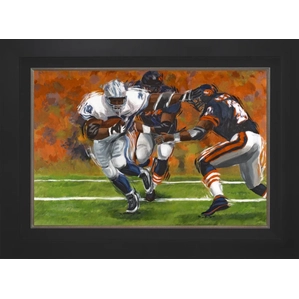
ARTBSANDERSBSEL2436F - $2,180.00
or 3 payments of $726.67
Dimensions: 24 X 36 Framed 34 1/2 x 46 1/2

ARTBSANDERSBSEL2436APF - $2,360.00
or 3 payments of $786.67
Dimensions: 24 X 36 Framed 34 1/2 x 46 1/2
ARTBSANDERSBSEL2436F - $2,180.00
or 3 payments of $726.67
Dimensions: 24 X 36 Framed 34 1/2 x 46 1/2
ARTBSANDERSBSEL2436APF - $2,360.00
or 3 payments of $786.67
Dimensions: 24 X 36 Framed 34 1/2 x 46 1/2
JC Richard is a fine arts and commercial artist from Beverly, Massachusetts. Though he developed an early style and affection for landscapes and coastal scenes, Richard found his niche and largest following in pop culture themes. Using his fine art talents to somewhat subdue the "pop" aspect while maintaining the subject familiarity, Richard has grown a fan base of collectors across the globe. Richard's portfolio spans many major brands and studios including Disney, Marvel, Lucasfilm, DC, Universal and Sony Entertainment. his art has been featured in galleries in major cities from coast to coast as well as internationally in Singapore and China.